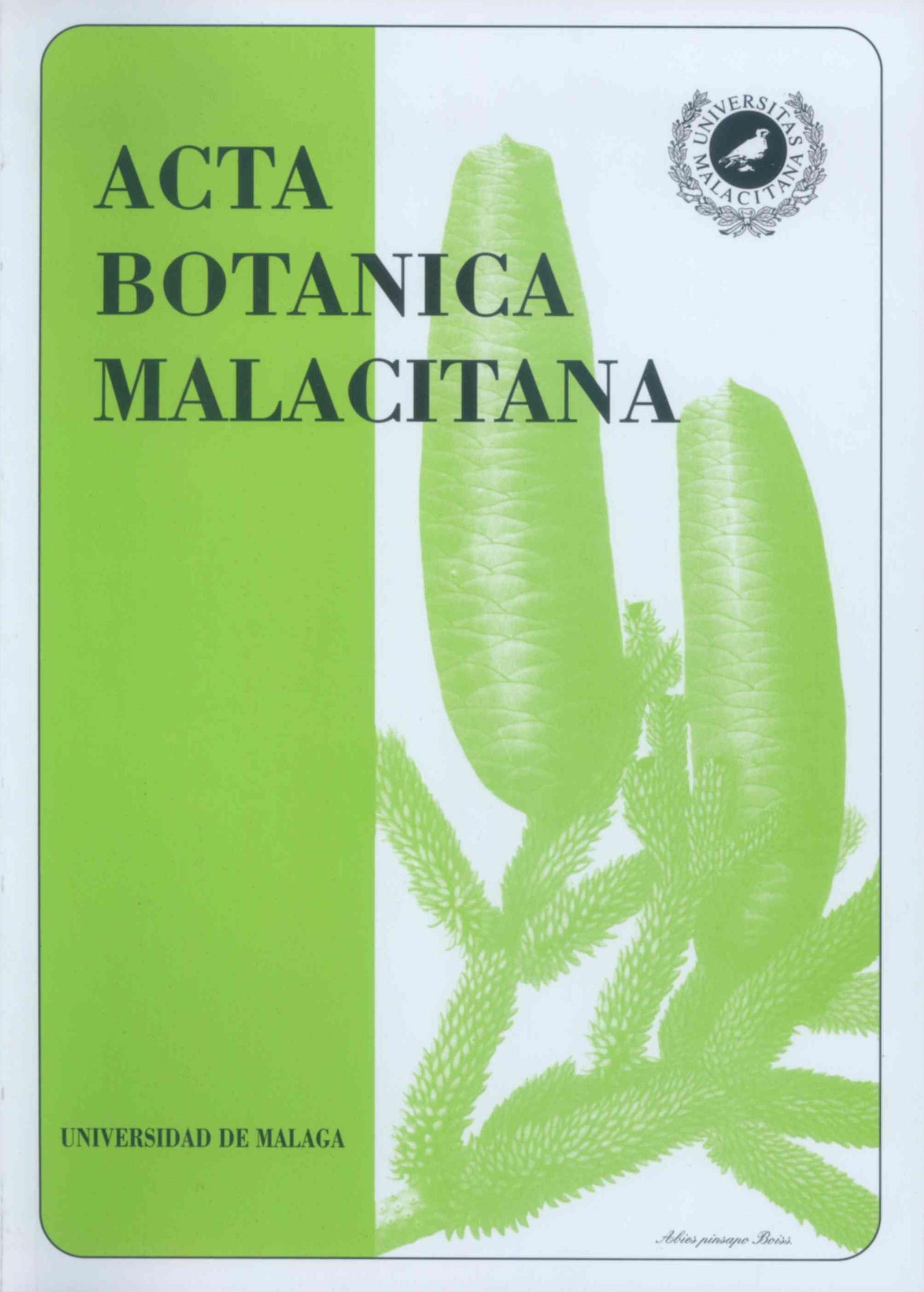Gracdaria ferox J. Agardh, new taxon for the Gran Canaria island
DOI:
https://doi.org/10.24310/abm.v16i.9132Keywords:
Gracilaria ferox, taxonomy, CanariesAbstract
The presence of Gracilaria ferox J. Agardh is recorded for the first time in the Canaries Islands. An anatomic-morphological study is undertaken on the species.
Downloads
Metrics
References
CHAPMAN, V.J. -1963-The marine algae ofJamaica. part. 2. Phaeophyceae and Rhodophyceae. Bulletin of the Institute of Jamaica. Science? Series, nº 12 pt. 2 pag. 105.
CORDEIRO MARINO, M. -1977- Rodoficeas bentonicas marinhas do estado de Santa Catarina. Rickia, 7:60-61.
GONZALEZ HENRIQUEZ, M.N. -1986- Flo?rula y Vegetacio?n hento?nica de la playa de Las Canteras. Tesis Doctoral (unplubl.) Univ. La Laguna. Tenerife. 257 pp.
LAWSON, G.W. & D.M. JOHN -1982- The marine algae and coastal environment of tropical west Africa pag. 218.
TAYLOR, VV. &M. RANDOLPH -1928- The marine algae of Florida with special reference to the dry Tortugas. Biblioteca Phycologica. J. Cramer. pag. 154.
TAYLOR, VV. & M. RANDOLPH -1960- Marine algae of the eastern tropical and subtropical coasts of the Americas. Michigan. pags. 444-445.
Downloads
Published
How to Cite
Issue
Section
License
Those authors who publish in this journal accept the following terms:
a. The authors will retain their copyrights and guarantee the journal the right of first publication of their work, which will be simultaneously subject to the Creative Commons Attribution-Non-commercial 4.0 license whose full text can be found at <http: // creative commons .org / licenses / by-nc / 4.0> that allows third parties to share the work as long as its author and its first publication are indicated, and as long as it is not for commercial purposes.
b. Authors may adopt other non-exclusive licensing agreements for the distribution of the version of the published paper (e.g., deposit it in an institutional telematic file or publish it in a monographic volume) provided that the initial publication in this journal be indicated.
c. Authors are allowed and recommended to disseminate their work through the Internet (e.g., in institutional telematic archives or on their websites) before and during the submission process, which can produce interesting exchanges and increase citations of the published work. (See The effect of open access)







1.png)
